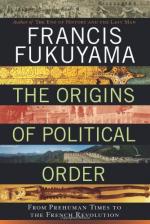|
This section contains 2,610 words (approx. 9 pages at 300 words per page) |

|
Emmanuel Joseph Sieyès
Prior to the French Revolution, the nation’s inhabitants were divided into three “estates,” or orders. The First Estate, or the clergy, was comprised of 130,000 people; the Second Estate was the aristocracy, which numbered 110,000. The remaining 25 million belonged to the Third Estate, which consisted of the middle class and poor, who lacked the political and economic freedoms of the first two groups. In 1788 and 1789 the Third Estate, especially the segment known as the bourgeoisie, or middle class, began to seek a greater political voice.
In January 1789 Emmanuel Joseph Sieyès, a priest, political theorist, and major figure in the revolution, published the pamphlet What Is the Third Estate" In the following viewpoint, which features excerpts from that pamphlet, Sieyès explains the political demands of the...
|
This section contains 2,610 words (approx. 9 pages at 300 words per page) |

|




